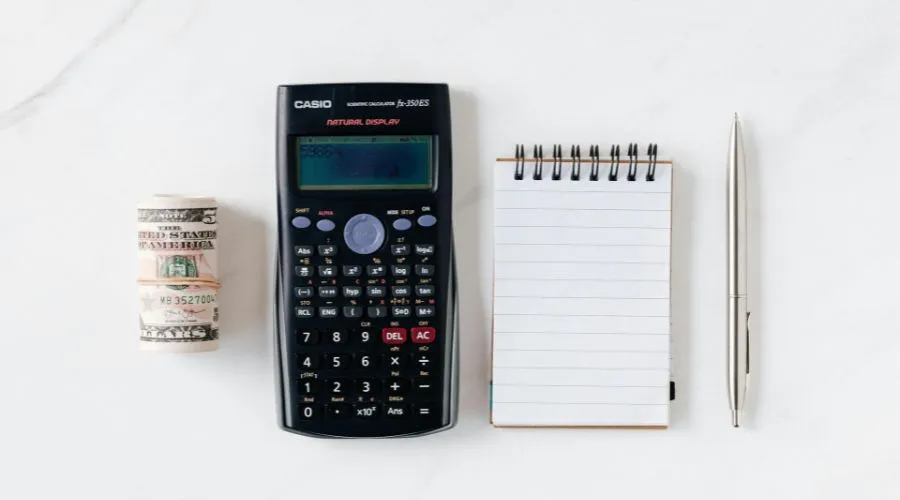
When you get paid, are you left wondering whether the money will be enough to cover all your expenses?
If that’s you, you are not alone.
It is hard to manage money, especially if your income is low. With the increase in prices and expenses, there just never seems to be enough money.
The answer is creating a budget. Think of a budget as a plan on how to use your money.
In this article, I will show you how to budget money on low income. I will also give you some useful tips on what to do if your income is low.
Why even bother?
You may be asking, why bother to create a budget?
Creating a budget and following through with it may not be the most thrilling activity, but the benefits are worth it. One of the top benefits of budgeting is the peace of mind it brings.
Here are the benefits of budgeting:
- Prepares you for emergencies
- Helps in achieving financial freedom
- Stops overspending
- Prevents unnecessary debt
- Reduces financial stress
- Helps in achieving financial goals
- Improves overall quality of life
You may also like reading:
Top 10 Brilliant Money-Saving Tips You Wish You Knew Sooner
How to Earn Money Without Investment (19 Legit Ways)
How to budget money on low income in 5 steps
1. Write down your income
The first step before making a budget is calculating your income. List down all your income sources and calculate your total monthly income.
If your only source of income is a job, write down your take-home salary; that’s the money you have after taxes. However, if you have other sources of income, such as a side hustle, stipends, part-time work, commissions, etc., list them all down and calculate your total monthly net income.
2. Write down your expenses
Knowing where you are spending money is probably the most important part of creating a budget. So try to find and gather all the ways you spend money and write them down.
There are three categories of expenses that you need to consider while making your budget.
The first category is fixed expenses, which include the necessities you must pay for every month, such as rent, utilities, groceries, transportation, and food. It’s important to determine the exact amount needed for each expense and include them in your budget.
The second category is wants, which includes expenses you don’t necessarily need but would still like to spend on, such as shopping, restaurants, entertainment, clothes, and gifts.
The last category is savings, investments, and debt repayment. It’s important to make sure you allocate a portion of your budget towards savings, investments, and paying off any debt.
3. Find a budgeting plan that works for you
To create a budget, it is important to have a budget plan in place. A budget plan is essentially a detailed plan outlining how much of your income will go toward each expense category. It serves as a roadmap for managing and spending your money effectively.
Budget plans will differ from person to person, depending on what they want to achieve. Here are a few commonly used budget plans:
50/30/20 Budget Plan

This is a simple budget rule where you must spend 50% of your income on needs, 30% on wants, and 20% on savings and debt repayment. I recommend using this budget plan. You can change the percentages based on your financial situation.
Zero-Based Budget
This budget plan is all about ensuring that your income equals your expenses. You must give every dollar earned a purpose so that you don’t have any money left to spend at the end of the day.

Using this budget plan doesn’t mean that you should spend all your money on expenses. Some funds within the budget can be allocated to debt repayment, savings, and investments. The only aim is that when you deduct expenses from income, it should equal zero.
Reverse Budgeting
With this plan, you allocate a portion of your income to savings, debt repayment, and investments first. Then, you use the remaining amount to cover expenses. This plan is excellent if you are trying to achieve financial freedom.
4. Create your budget
How to budget money on low income is not very different from budgeting when you have enough. To create a budget, you need to subtract expenses from income. It is a straightforward process that requires only a pen and paper.
You may also use different apps and software programs to create your budget. Microsoft Excel offers several budget templates you can customize and use for free.
Let’s assume you are using the 50/30/20 budget rule, and your salary is $3000. Your budget should look something like this;
| Amount | |
|---|---|
| Net income | $3000 |
| Fixed expenses | |
| Rent/Mortgage Food Utilities Groceries Transport | $800 $270 $120 $150 $75 |
| Subtotal | – $1415 |
| Variable Expenses | |
| Entertainment Shopping Restaurants Gifts Travel | $130 $300 $120 $100 $120 |
| Subtotal | – $770 |
| Savings & Investments | |
| Savings Credit cards Personal loans | $250 $150 $100 |
| Subtotal | – $500 |
| Total Expenses | – $2685 |
| Cash short/extra | $315 |
Rent will likely be your highest expense, so finding a cheaper place to live will help you save the most money. Ensure that your rent is no more than 35% of your income.
If you have extra cash after creating your budget, use it to repay debts to get rid of debt. You may also put it in your savings account or use it as investment money. Do the same if you have money left at the end of the month.
5 Stick to your budget and make adjustments
The last and most important part of having a budget is following through with your budget. However, this does not mean that you can’t make minor adjustments along the way.
Let’s say you don’t have enough money for transportation. To cover the cost, you might take funds that were originally intended for shopping or entertainment. And if your friends suddenly plan a trip, you don’t have to miss out just because you’re sticking to a budget. You can simply take money from another category to cover the trip.
You can play with the number in your budget but do not use money intended for paying debts, saving, and investing, as these will eventually lead you to financial independence.
7 things you must do if you earn a low income

1. Have three bank accounts
You should have a checking and savings account, and it’s a good idea to also have an investment account.
Use your checking account to manage expenses. You can link this account to your bank card for easy payments. You can also use this account to receive your salary. Once you’ve created your budget, ensure you only keep the amount you plan to spend in this account.
Use the savings account for savings. You should open a savings account with the highest interest rate to earn money on your savings. Having a saving goal can help you avoid spending your savings.
Having an investment account can allow you to invest your money in stocks, index funds, bonds, cryptocurrency, etc. Keep in mind that funds in investment accounts fluctuate in value, and there’s a risk of losing the money.
The easiest and least risky way to get started with investments is by buying ETFs from online stockbrokers.
2. Pay off debt
Having a low income is not fun, but what’s worse is having a low income with debt. Credit card debts, student loans, consumer debts, and other loans can hold you back from being financially independent.
Pay off debts as soon as possible because interest on these debts accumulates the longer you have the debt.
3 Avoid wasteful spending
Wasteful spending may mean spending too much on coffee, restaurants, alcohol, and cigarettes. It may also mean spending money on insurance and subscriptions you don’t use or buying something simply because it’s on sale.
Avoid wasteful spending as much as possible if you have a low budget. Here are things you never need to spend money on, if you want to.
4. Hunt for better deals
When making purchases, be mindful of cost, whether it’s a pricey item or everyday groceries. For expensive items, it’s always a good idea to compare prices online to ensure you’re getting the best deal.
In grocery stores, you can often find a similar product at a lower price by checking the shelves below. Additionally, it’s worth checking if the items you need are on sale before buying.
5. Use public transportation
Use public transportation if your workplace or places you often visit are accessible by public transport.
Having a car comes with many costs: fuel costs, maintenance fees, parking fees, speeding tickets, taxes, etc. Think of unnecessary car insurance fees you won’t have to pay.
You can save a lot of money by choosing to use public transport.
6. Build an emergency fund
An emergency fund is money set aside for future unexpected expenses. This money can become handy when;
- You lose your job
- You need to replace a home appliance
- You have a medical emergency
- There’s unplanned travel.
Before beginning to save or invest, it’s important to have an emergency fund that can last for at least three to six months. To avoid using this fund unnecessarily, keep it in a separate bank account.
7. Start a side hustle
The most important thing you can do when you have a low income is to increase your income. By starting a side hustle, you can supplement your income and if you are lucky, you can turn it into a full-time income.
Whether online or offline, there are many things you can do to earn money. You may find a part-time job, start a small business, or become a freelancer online. Here are some side hustle ideas you should consider.
Conclusion
To reach financial independence, you must keep track of your income and expenses.
In this article, you will learn how to budget money on low income. I also share a few useful tips for what you must do if you earn a low income.
By learning how to budget money effectively, you will stop running out of money and avoid the risk of acquiring debt. You will also be able to save money.
If you have saved up $1000 already, here are proven ways to turn it into $5000.


